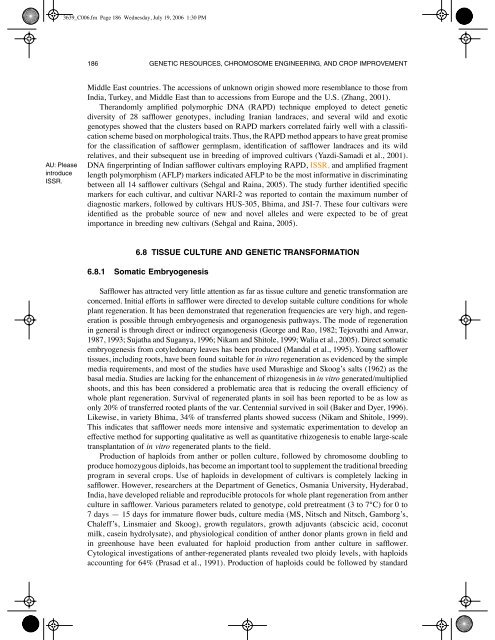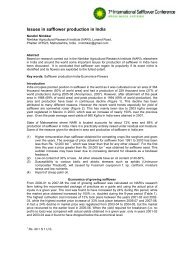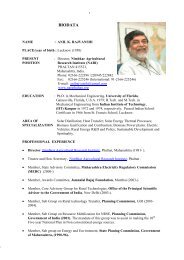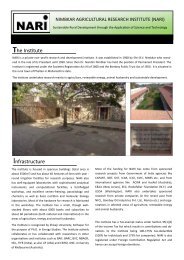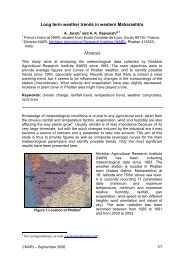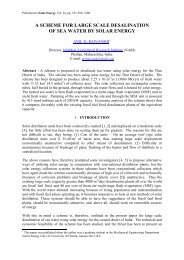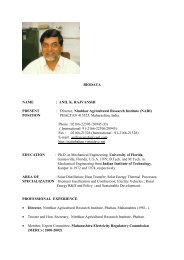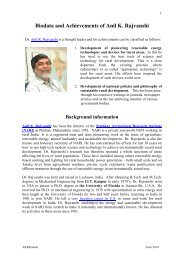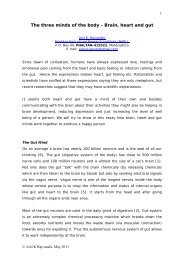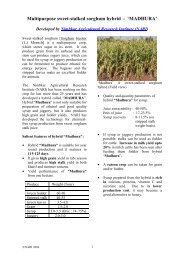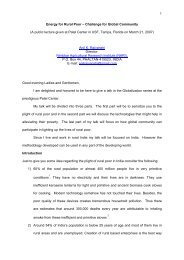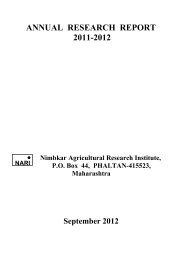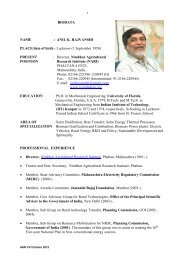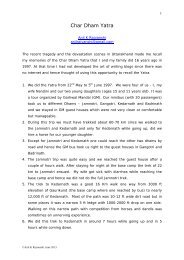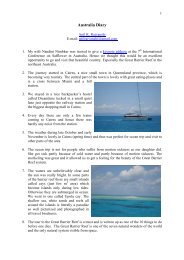Safflower (Carthamus tinctorius L.) - NARI
Safflower (Carthamus tinctorius L.) - NARI
Safflower (Carthamus tinctorius L.) - NARI
You also want an ePaper? Increase the reach of your titles
YUMPU automatically turns print PDFs into web optimized ePapers that Google loves.
3639_C006.fm Page 186 Wednesday, July 19, 2006 1:30 PM186 GENETIC RESOURCES, CHROMOSOME ENGINEERING, AND CROP IMPROVEMENTAU: PleaseintroduceISSR.Middle East countries. The accessions of unknown origin showed more resemblance to those fromIndia, Turkey, and Middle East than to accessions from Europe and the U.S. (Zhang, 2001).Therandomly amplified polymorphic DNA (RAPD) technique employed to detect geneticdiversity of 28 safflower genotypes, including Iranian landraces, and several wild and exoticgenotypes showed that the clusters based on RAPD markers correlated fairly well with a classificationscheme based on morphological traits. Thus, the RAPD method appears to have great promisefor the classification of safflower germplasm, identification of safflower landraces and its wildrelatives, and their subsequent use in breeding of improved cultivars (Yazdi-Samadi et al., 2001).DNA fingerprinting of Indian safflower cultivars employing RAPD, ISSR, and amplified fragmentlength polymorphism (AFLP) markers indicated AFLP to be the most informative in discriminatingbetween all 14 safflower cultivars (Sehgal and Raina, 2005). The study further identified specificmarkers for each cultivar, and cultivar <strong>NARI</strong>-2 was reported to contain the maximum number ofdiagnostic markers, followed by cultivars HUS-305, Bhima, and JSI-7. These four cultivars wereidentified as the probable source of new and novel alleles and were expected to be of greatimportance in breeding new cultivars (Sehgal and Raina, 2005).6.8 TISSUE CULTURE AND GENETIC TRANSFORMATION6.8.1 Somatic Embryogenesis<strong>Safflower</strong> has attracted very little attention as far as tissue culture and genetic transformation areconcerned. Initial efforts in safflower were directed to develop suitable culture conditions for wholeplant regeneration. It has been demonstrated that regeneration frequencies are very high, and regenerationis possible through embryogenesis and organogenesis pathways. The mode of regenerationin general is through direct or indirect organogenesis (George and Rao, 1982; Tejovathi and Anwar,1987, 1993; Sujatha and Suganya, 1996; Nikam and Shitole, 1999; Walia et al., 2005). Direct somaticembryogenesis from cotyledonary leaves has been produced (Mandal et al., 1995). Young safflowertissues, including roots, have been found suitable for in vitro regeneration as evidenced by the simplemedia requirements, and most of the studies have used Murashige and Skoog’s salts (1962) as thebasal media. Studies are lacking for the enhancement of rhizogenesis in in vitro generated/multipliedshoots, and this has been considered a problematic area that is reducing the overall efficiency ofwhole plant regeneration. Survival of regenerated plants in soil has been reported to be as low asonly 20% of transferred rooted plants of the var. Centennial survived in soil (Baker and Dyer, 1996).Likewise, in variety Bhima, 34% of transferred plants showed success (Nikam and Shitole, 1999).This indicates that safflower needs more intensive and systematic experimentation to develop aneffective method for supporting qualitative as well as quantitative rhizogenesis to enable large-scaletransplantation of in vitro regenerated plants to the field.Production of haploids from anther or pollen culture, followed by chromosome doubling toproduce homozygous diploids, has become an important tool to supplement the traditional breedingprogram in several crops. Use of haploids in development of cultivars is completely lacking insafflower. However, researchers at the Department of Genetics, Osmania University, Hyderabad,India, have developed reliable and reproducible protocols for whole plant regeneration from antherculture in safflower. Various parameters related to genotype, cold pretreatment (3 to 7°C) for 0 to7 days — 15 days for immature flower buds, culture media (MS, Nitsch and Nitsch, Gamborg’s,Chaleff’s, Linsmaier and Skoog), growth regulators, growth adjuvants (abscicic acid, coconutmilk, casein hydrolysate), and physiological condition of anther donor plants grown in field andin greenhouse have been evaluated for haploid production from anther culture in safflower.Cytological investigations of anther-regenerated plants revealed two ploidy levels, with haploidsaccounting for 64% (Prasad et al., 1991). Production of haploids could be followed by standard


